Ferdinand Berthoud: FB 1L With Age And Phases Of The Moon
3 April 2019Ferdinand Berthoud unveils a new experimental collection, combining the in-house tourbillon movement with a new display of the age and phases of the moon: the Chronomètre FB 1L.
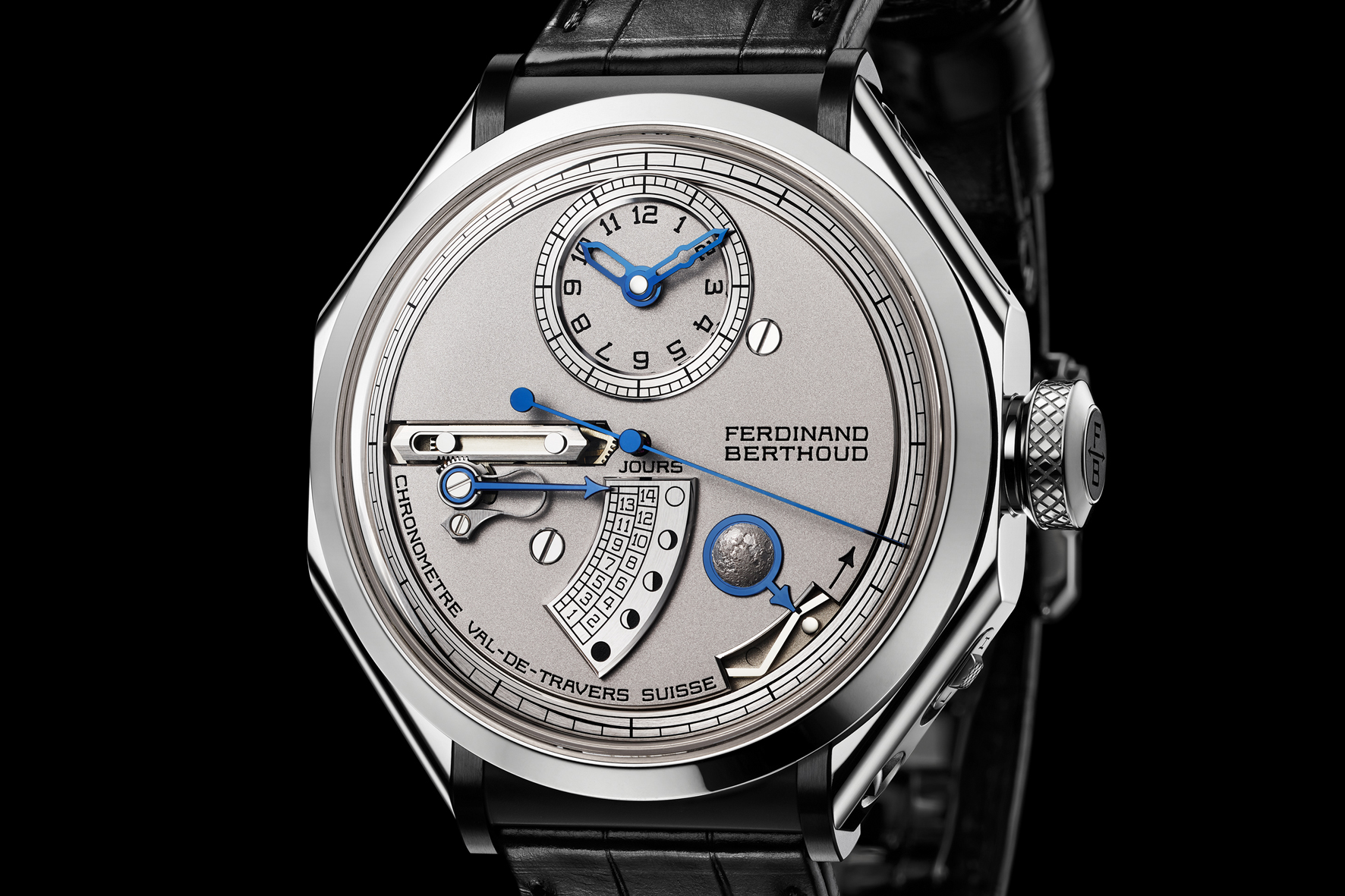
Available in two ten-piece limited editions – with a case in 18-carat white gold and black ceramic lugs, or in anthracite ceramised titanium & sandblasted 18-carat white gold, this new collection displays the hours and minutes on a dedicated subdial at 12 o’clock, seconds in the centre and the 53-hour power reserve on the back of the movement. A large hand at 6 o’clock indicates the age and phases of the moon in a continuous back and forth movement. This patent-pending complication, combined with the constant force of the FB-T.FC.L calibre, ensures astronomical precision corresponding to a one-day difference in 577 years of operation.
Truly at the crossroads between astronomy and chronometry, the Chronomètre FB 1L pays tribute to Ferdinand Berthoud’s work on chronometric precision and the calculation of longitude. It was to this end that the master watchmaker designed his famous Marine Chronometers, which inspired the creation of the FB 1L collection.
The FB 1L Chronometer is a model displaying the age and phases of the moon. Combining chronometric precision and astronomical measurement, it associates these two previously dissociated values which jointly made it possible – almost three centuries ago – to achieve more accurate longitude calculations, a quest at the heart of a large number of Ferdinand Berthoud’s works.
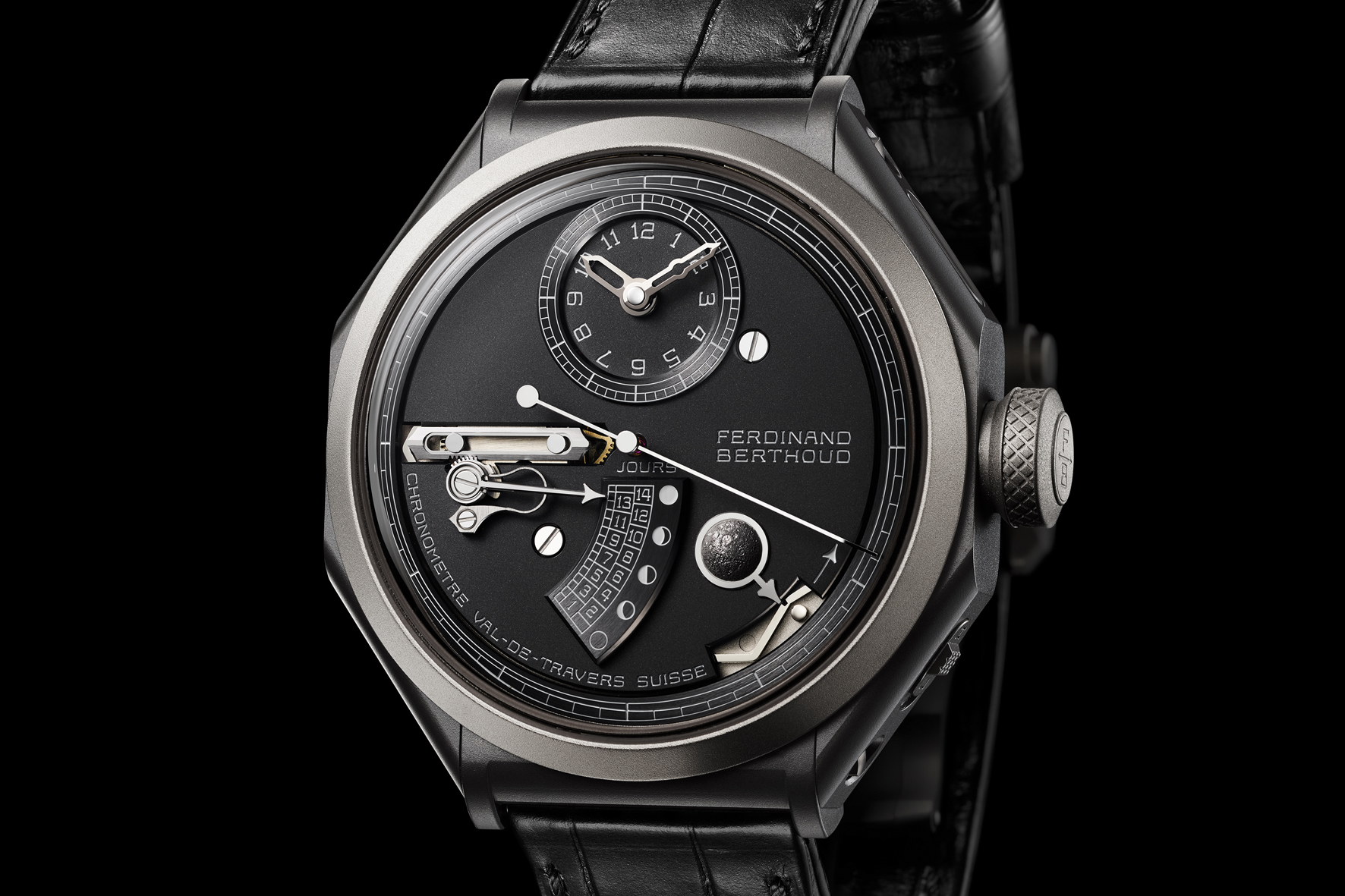
The age and phases of the moon are two separate measurements. The moon phase is the most common in watchmaking. This is the complication that visually indicates the different lunar cycles. The moon phase is divided into four phases: new moon, first quarter, full moon and last quarter. A lunation or lunar cycle is the time interval between two new moons. A symbolic and aesthetic complication, the moon phase does not, however, offer the accuracy necessary for astronomical use.
The age of the moon is a more accurate indicator which counts the number of days since the last new moon. This veritable scientific measuring instrument, coupled with the chronometric measurement of time, made it possible to determine longitude at sea with unparalleled accuracy nearly 270 years ago.
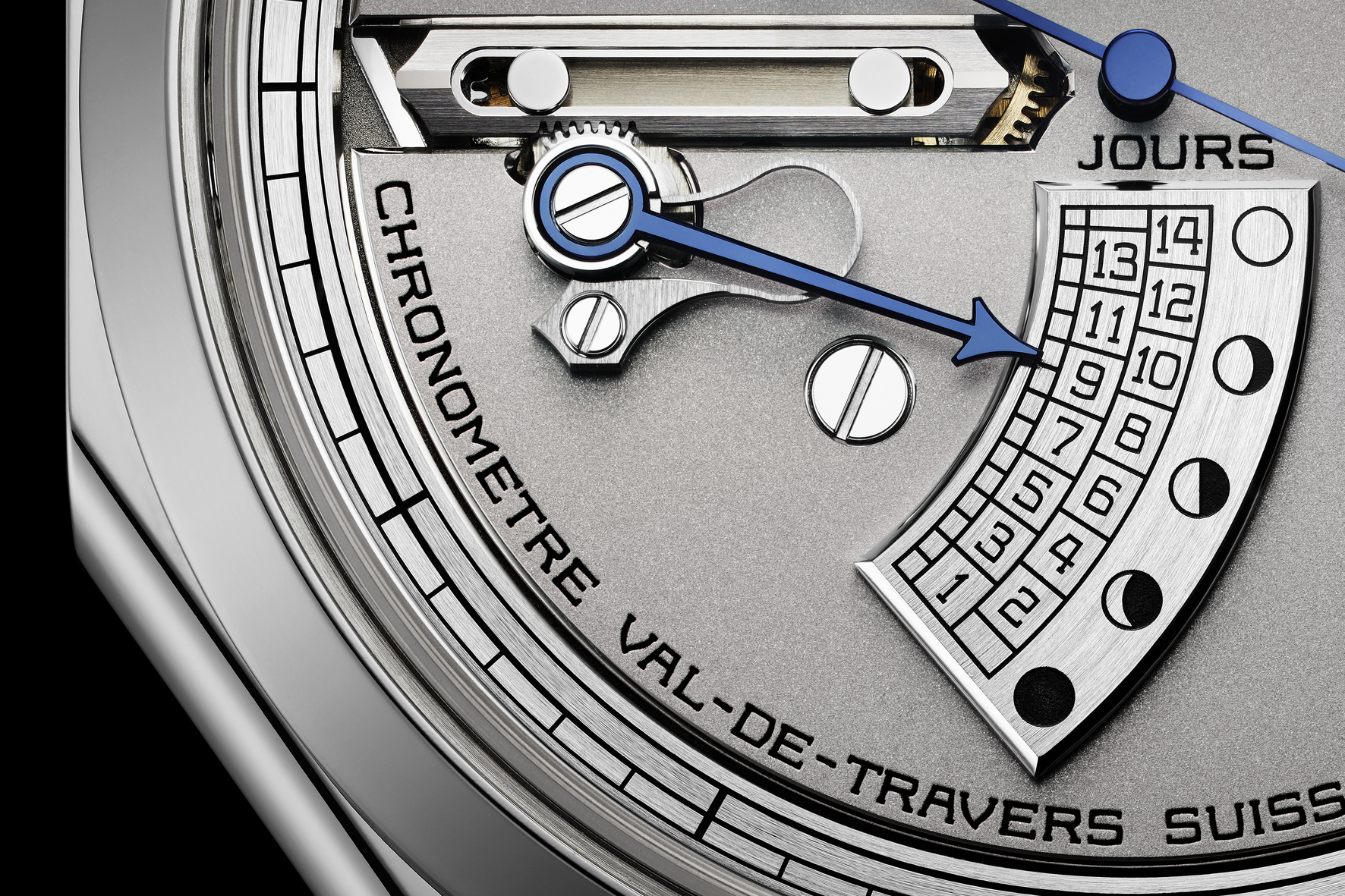
For the first time, the FB 1L collection combines these two instruments: a chronometer and an indicator of the age and phases of the moon within the same model.
The 100% in-house calibre of the Chronomètre FB 1L features an original suspended fusee-and-chain construction. It delivers a constant force to the escapement throughout the operation of movement, from its first turn of the crown to complete winding, thus achieving a 53-hour power reserve.
The movement also features a tourbillon with direct-drive seconds, compensating for the variations in rate induced by the different positions the watch adopts throughout the day. Direct-drive seconds are made possible by the correlation between the seconds wheel and the wheel driving the tourbillon carriage.
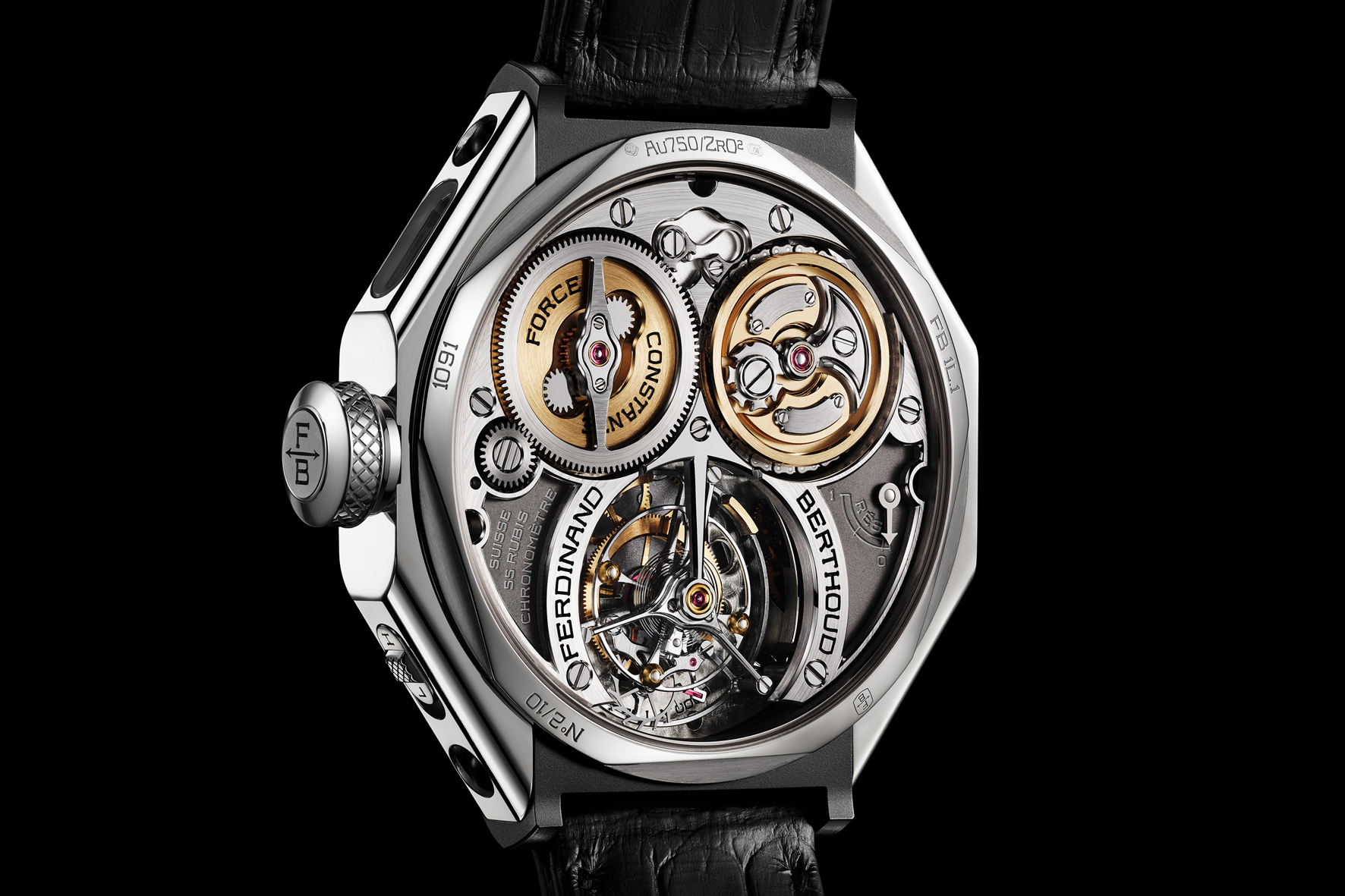
Finally, for the first time, Calibre FB-T.FC.L is complemented by a patented complication: the age of the moon. This consists of two indications. The first is the display of the moon’s age in days, marked from 1 to 14 on a sector swept over by a hand moving back and forth. Day “1” is the first day since the new moon. Facing this “1” is a circle symbolising the latter. The next three quarters are spread over the same sector as the days go by. Facing the 14thday is a solid disc, symbolising the full moon. At this point, the hand performs a gradual backward move passing through the same quarters in the opposite direction: three quarters, two quarters, one quarter, until the return to the new moon.
This display of the age of the moon is complemented by another function revealed through a dial opening between 4 and 5 o’clock, showing the current moon phase, waxing or waning, thereby indicating whether the moon-age indicator hand is rising (up to day 14) or returning (to the new moon). Since this hand progresses at a rate imperceptible to the naked eye, this precious moon-phase indication makes it possible at a single glance to see whether one is heading towards a full moon or a new moon.
This age-of-the-moon display is provided by an arrow surrounding a half-sphere accurately depicting the two large faces of the Moon – visible and hidden – on both versions of the FB 1L collection.
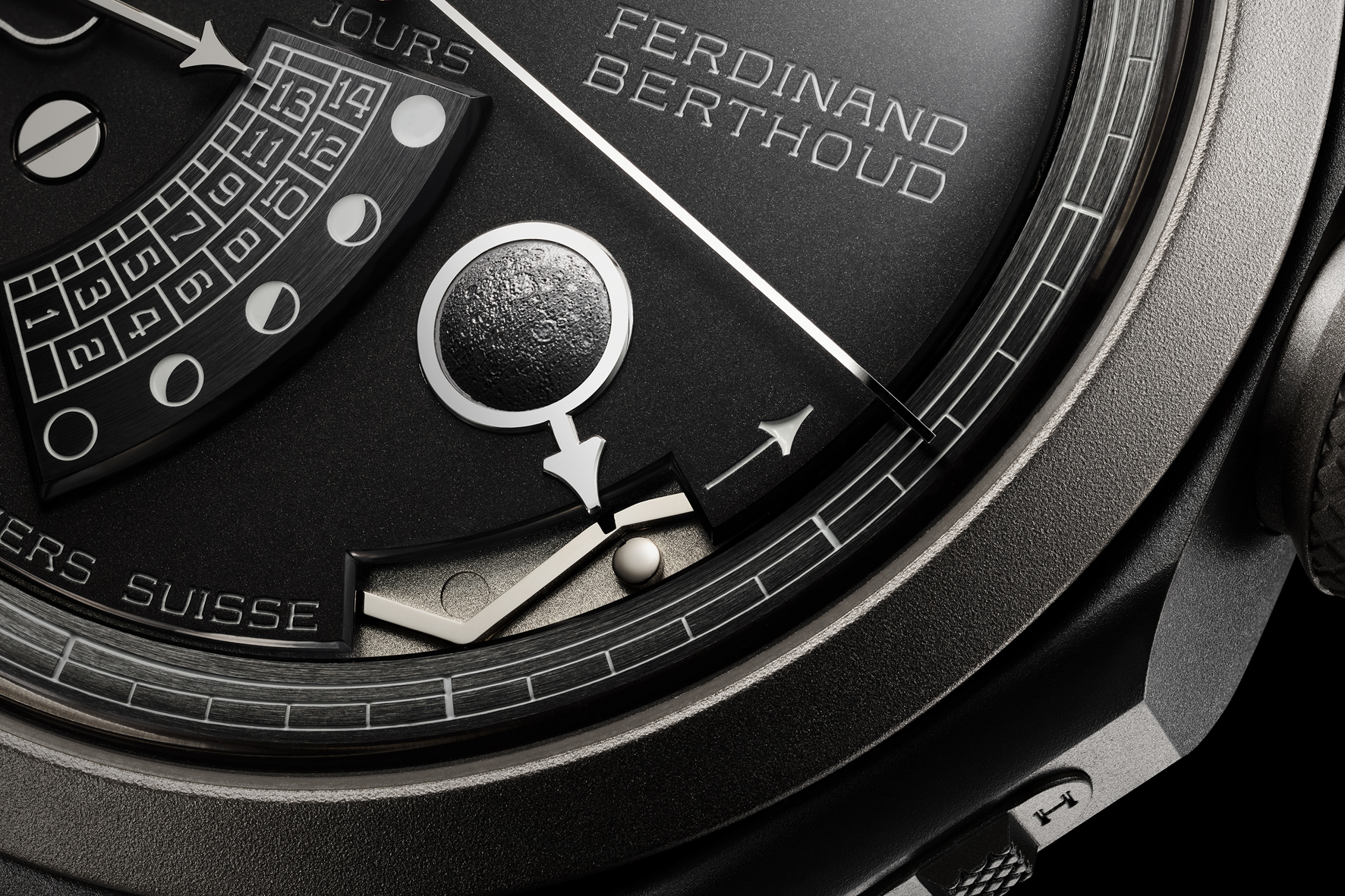
This original mechanism is inspired by a system for displaying the equation of time developed by Ferdinand Berthoud in 1752. It was based on the use of a feeler-spindle arm that followed an equation of time cam. In this instance, however, it is an age-of-the-moon cam.
This contemporary interpretation serves to provide a disc-free display of the age of the moon by means of a hand moving back and forth with an accuracy of 29 days, 12 hours, 44 minutes and 15 seconds – corresponding to a mere one-day difference in 577 years of continuous operation. This exceptional result is made possible thanks to the large number of teeth on the moving disc revealed between 4 and 5 o’clock. The Chronomètre FB 1L thus achieves a degree of accuracy in displaying the age of the moon that exceeds conventional moon phase displays, most of which remain accurate over a period of “only” 122 years.
The accuracy of each movement in this collection is attested by a chronometry certificate issued by the Official Swiss Chronometer Testing Institute (COSC).
For the FB 1L collection, the case was completed for the first time with a selector switch placed between 4 and 5 o’clock which enables the wearer to choose between two positions, L and H, to set the age of the moon or the time.
Two versions of the Chronomètre FB 1L are available. The FB 1L.1 “Near Side of the Moon”. The piece has a case middle, side elements and crown in 18-carat polished white gold. Its lugs are made of black ceramic. (Price €.275.000)
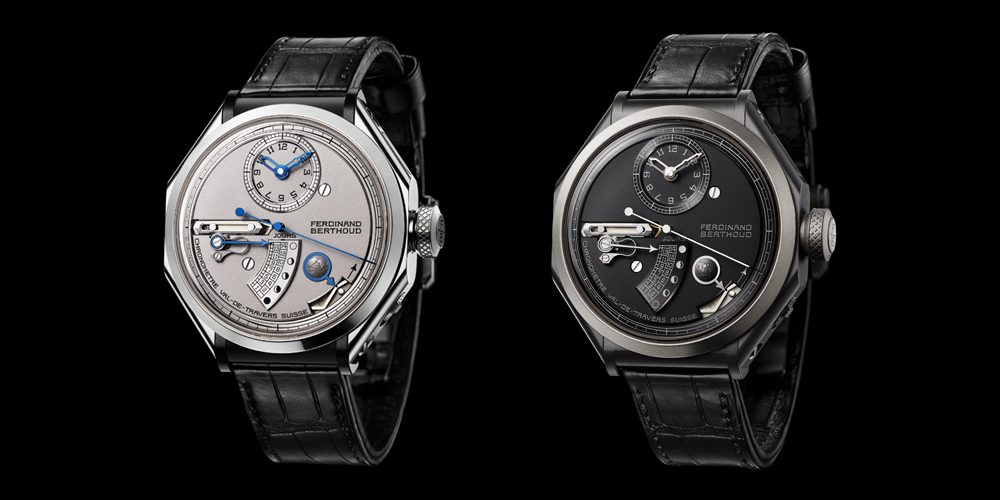
The FB 1L.4 “Far Side of the Moon”. This time, its white gold case middle is sandblasted and, in place of ceramic, the lugs and side elements are made of dark grey ceramised titanium. On average four times harder than standard titanium. (Price €.259.500)
Each piece will be issued as a numbered ten-piece limited edition.
